Will Wei Sun
Purdue University
Fairness-aware Contextual Dynamic Pricing with Strategic Buyers
Jan 25, 2025Abstract:Contextual pricing strategies are prevalent in online retailing, where the seller adjusts prices based on products' attributes and buyers' characteristics. Although such strategies can enhance seller's profits, they raise concerns about fairness when significant price disparities emerge among specific groups, such as gender or race. These disparities can lead to adverse perceptions of fairness among buyers and may even violate the law and regulation. In contrast, price differences can incentivize disadvantaged buyers to strategically manipulate their group identity to obtain a lower price. In this paper, we investigate contextual dynamic pricing with fairness constraints, taking into account buyers' strategic behaviors when their group status is private and unobservable from the seller. We propose a dynamic pricing policy that simultaneously achieves price fairness and discourages strategic behaviors. Our policy achieves an upper bound of $O(\sqrt{T}+H(T))$ regret over $T$ time horizons, where the term $H(T)$ arises from buyers' assessment of the fairness of the pricing policy based on their learned price difference. When buyers are able to learn the fairness of the price policy, this upper bound reduces to $O(\sqrt{T})$. We also prove an $\Omega(\sqrt{T})$ regret lower bound of any pricing policy under our problem setting. We support our findings with extensive experimental evidence, showcasing our policy's effectiveness. In our real data analysis, we observe the existence of price discrimination against race in the loan application even after accounting for other contextual information. Our proposed pricing policy demonstrates a significant improvement, achieving 35.06% reduction in regret compared to the benchmark policy.
Low-Rank Contextual Reinforcement Learning from Heterogeneous Human Feedback
Dec 27, 2024Abstract:Reinforcement learning from human feedback (RLHF) has become a cornerstone for aligning large language models with human preferences. However, the heterogeneity of human feedback, driven by diverse individual contexts and preferences, poses significant challenges for reward learning. To address this, we propose a Low-rank Contextual RLHF (LoCo-RLHF) framework that integrates contextual information to better model heterogeneous feedback while maintaining computational efficiency. Our approach builds on a contextual preference model, leveraging the intrinsic low-rank structure of the interaction between user contexts and query-answer pairs to mitigate the high dimensionality of feature representations. Furthermore, we address the challenge of distributional shifts in feedback through our Pessimism in Reduced Subspace (PRS) policy, inspired by pessimistic offline reinforcement learning techniques. We theoretically demonstrate that our policy achieves a tighter sub-optimality gap compared to existing methods. Extensive experiments validate the effectiveness of LoCo-RLHF, showcasing its superior performance in personalized RLHF settings and its robustness to distribution shifts.
Privacy-Preserving Dynamic Assortment Selection
Oct 29, 2024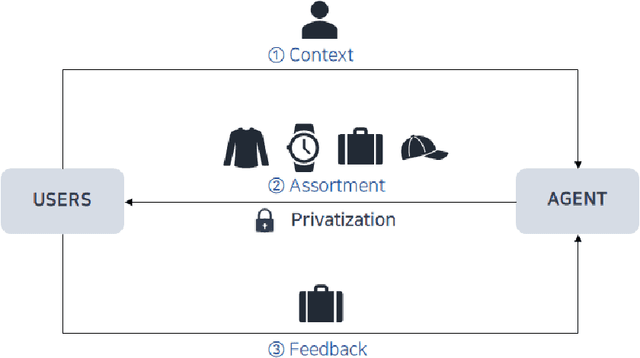

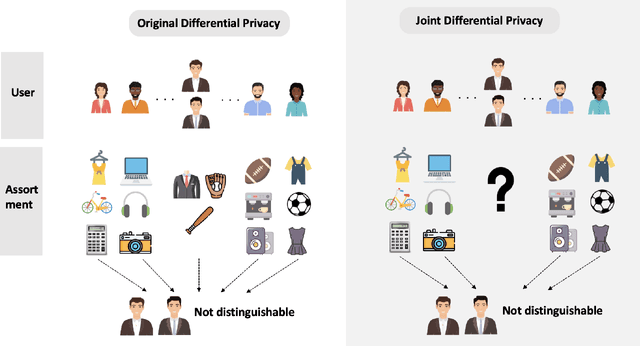

Abstract:With the growing demand for personalized assortment recommendations, concerns over data privacy have intensified, highlighting the urgent need for effective privacy-preserving strategies. This paper presents a novel framework for privacy-preserving dynamic assortment selection using the multinomial logit (MNL) bandits model. Our approach employs a perturbed upper confidence bound method, integrating calibrated noise into user utility estimates to balance between exploration and exploitation while ensuring robust privacy protection. We rigorously prove that our policy satisfies Joint Differential Privacy (JDP), which better suits dynamic environments than traditional differential privacy, effectively mitigating inference attack risks. This analysis is built upon a novel objective perturbation technique tailored for MNL bandits, which is also of independent interest. Theoretically, we derive a near-optimal regret bound of $\tilde{O}(\sqrt{T})$ for our policy and explicitly quantify how privacy protection impacts regret. Through extensive simulations and an application to the Expedia hotel dataset, we demonstrate substantial performance enhancements over the benchmark method.
Dual Active Learning for Reinforcement Learning from Human Feedback
Oct 03, 2024


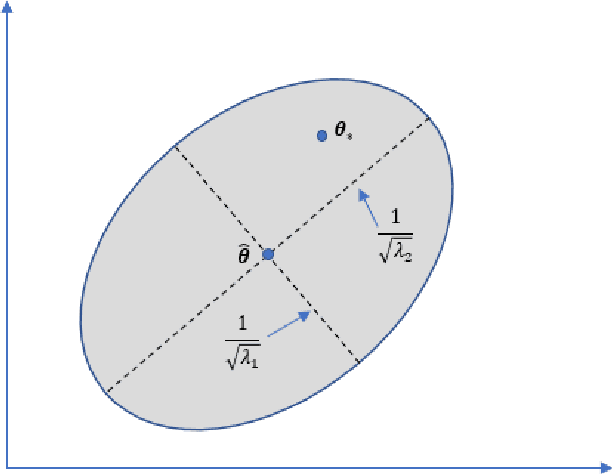
Abstract:Aligning large language models (LLMs) with human preferences is critical to recent advances in generative artificial intelligence. Reinforcement learning from human feedback (RLHF) is widely applied to achieve this objective. A key step in RLHF is to learn the reward function from human feedback. However, human feedback is costly and time-consuming, making it essential to collect high-quality conversation data for human teachers to label. Additionally, different human teachers have different levels of expertise. It is thus critical to query the most appropriate teacher for their opinions. In this paper, we use offline reinforcement learning (RL) to formulate the alignment problem. Motivated by the idea of $D$-optimal design, we first propose a dual active reward learning algorithm for the simultaneous selection of conversations and teachers. Next, we apply pessimistic RL to solve the alignment problem, based on the learned reward estimator. Theoretically, we show that the reward estimator obtained through our proposed adaptive selection strategy achieves minimal generalized variance asymptotically, and prove that the sub-optimality of our pessimistic policy scales as $O(1/\sqrt{T})$ with a given sample budget $T$. Through simulations and experiments on LLMs, we demonstrate the effectiveness of our algorithm and its superiority over state-of-the-arts.
Active Learning for Fair and Stable Online Allocations
Jun 20, 2024Abstract:We explore an active learning approach for dynamic fair resource allocation problems. Unlike previous work that assumes full feedback from all agents on their allocations, we consider feedback from a select subset of agents at each epoch of the online resource allocation process. Despite this restriction, our proposed algorithms provide regret bounds that are sub-linear in number of time-periods for various measures that include fairness metrics commonly used in resource allocation problems and stability considerations in matching mechanisms. The key insight of our algorithms lies in adaptively identifying the most informative feedback using dueling upper and lower confidence bounds. With this strategy, we show that efficient decision-making does not require extensive feedback and produces efficient outcomes for a variety of problem classes.
Low-Rank Online Dynamic Assortment with Dual Contextual Information
Apr 19, 2024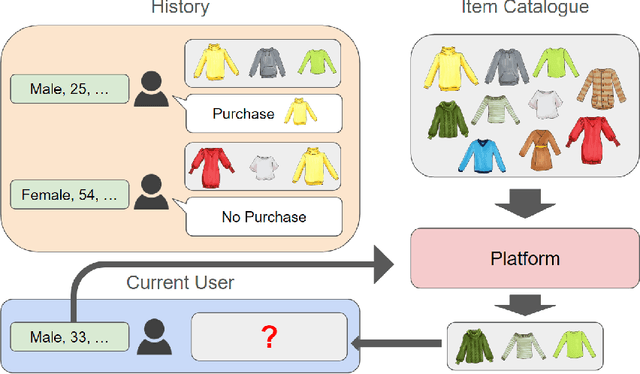

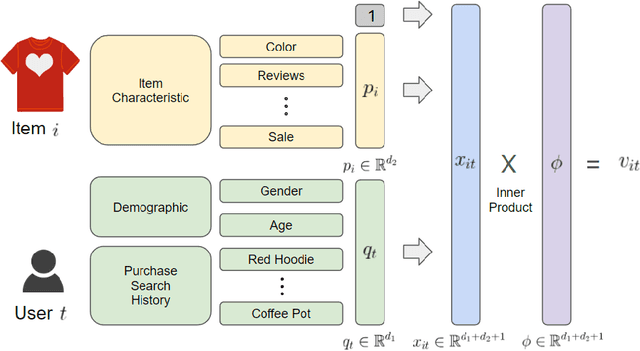

Abstract:As e-commerce expands, delivering real-time personalized recommendations from vast catalogs poses a critical challenge for retail platforms. Maximizing revenue requires careful consideration of both individual customer characteristics and available item features to optimize assortments over time. In this paper, we consider the dynamic assortment problem with dual contexts -- user and item features. In high-dimensional scenarios, the quadratic growth of dimensions complicates computation and estimation. To tackle this challenge, we introduce a new low-rank dynamic assortment model to transform this problem into a manageable scale. Then we propose an efficient algorithm that estimates the intrinsic subspaces and utilizes the upper confidence bound approach to address the exploration-exploitation trade-off in online decision making. Theoretically, we establish a regret bound of $\tilde{O}((d_1+d_2)r\sqrt{T})$, where $d_1, d_2$ represent the dimensions of the user and item features respectively, $r$ is the rank of the parameter matrix, and $T$ denotes the time horizon. This bound represents a substantial improvement over prior literature, made possible by leveraging the low-rank structure. Extensive simulations and an application to the Expedia hotel recommendation dataset further demonstrate the advantages of our proposed method.
Pessimistic Causal Reinforcement Learning with Mediators for Confounded Offline Data
Mar 18, 2024



Abstract:In real-world scenarios, datasets collected from randomized experiments are often constrained by size, due to limitations in time and budget. As a result, leveraging large observational datasets becomes a more attractive option for achieving high-quality policy learning. However, most existing offline reinforcement learning (RL) methods depend on two key assumptions--unconfoundedness and positivity--which frequently do not hold in observational data contexts. Recognizing these challenges, we propose a novel policy learning algorithm, PESsimistic CAusal Learning (PESCAL). We utilize the mediator variable based on front-door criterion to remove the confounding bias; additionally, we adopt the pessimistic principle to address the distributional shift between the action distributions induced by candidate policies, and the behavior policy that generates the observational data. Our key observation is that, by incorporating auxiliary variables that mediate the effect of actions on system dynamics, it is sufficient to learn a lower bound of the mediator distribution function, instead of the Q-function, to partially mitigate the issue of distributional shift. This insight significantly simplifies our algorithm, by circumventing the challenging task of sequential uncertainty quantification for the estimated Q-function. Moreover, we provide theoretical guarantees for the algorithms we propose, and demonstrate their efficacy through simulations, as well as real-world experiments utilizing offline datasets from a leading ride-hailing platform.
Rate-Optimal Rank Aggregation with Private Pairwise Rankings
Feb 26, 2024Abstract:In various real-world scenarios like recommender systems and political surveys, pairwise rankings are commonly collected and utilized for rank aggregation to obtain an overall ranking of items. However, preference rankings can reveal individuals' personal preferences, underscoring the need to protect them before releasing for downstream analysis. In this paper, we address the challenge of preserving privacy while ensuring the utility of rank aggregation based on pairwise rankings generated from the Bradley-Terry-Luce (BTL) model. Using the randomized response mechanism to perturb raw pairwise rankings is a common privacy protection strategy used in practice, but a critical challenge arises because the privatized rankings no longer adhere to the BTL model, resulting in significant bias in downstream rank aggregation tasks. Motivated from this, we propose a debiased randomized response mechanism to protect the raw pairwise rankings, ensuring consistent estimation of true preferences and rankings in downstream rank aggregation. Theoretically, we offer insights into the relationship between overall privacy guarantees and estimation errors from private ranking data, and establish minimax rates for estimation errors. This enables the determination of optimal privacy guarantees that balance consistency in rank aggregation with robust privacy protection. We also investigate convergence rates of expected ranking errors for partial and full ranking recovery, quantifying how privacy protection influences the specification of top-$K$ item sets and complete rankings. Our findings are validated through extensive simulations and a real application.
Online Tensor Inference
Dec 28, 2023Abstract:Recent technological advances have led to contemporary applications that demand real-time processing and analysis of sequentially arriving tensor data. Traditional offline learning, involving the storage and utilization of all data in each computational iteration, becomes impractical for high-dimensional tensor data due to its voluminous size. Furthermore, existing low-rank tensor methods lack the capability for statistical inference in an online fashion, which is essential for real-time predictions and informed decision-making. This paper addresses these challenges by introducing a novel online inference framework for low-rank tensor learning. Our approach employs Stochastic Gradient Descent (SGD) to enable efficient real-time data processing without extensive memory requirements, thereby significantly reducing computational demands. We establish a non-asymptotic convergence result for the online low-rank SGD estimator, nearly matches the minimax optimal rate of estimation error in offline models that store all historical data. Building upon this foundation, we propose a simple yet powerful online debiasing approach for sequential statistical inference in low-rank tensor learning. The entire online procedure, covering both estimation and inference, eliminates the need for data splitting or storing historical data, making it suitable for on-the-fly hypothesis testing. Given the sequential nature of our data collection, traditional analyses relying on offline methods and sample splitting are inadequate. In our analysis, we control the sum of constructed super-martingales to ensure estimates along the entire solution path remain within the benign region. Additionally, a novel spectral representation tool is employed to address statistical dependencies among iterative estimates, establishing the desired asymptotic normality.
Contextual Dynamic Pricing with Strategic Buyers
Jul 08, 2023



Abstract:Personalized pricing, which involves tailoring prices based on individual characteristics, is commonly used by firms to implement a consumer-specific pricing policy. In this process, buyers can also strategically manipulate their feature data to obtain a lower price, incurring certain manipulation costs. Such strategic behavior can hinder firms from maximizing their profits. In this paper, we study the contextual dynamic pricing problem with strategic buyers. The seller does not observe the buyer's true feature, but a manipulated feature according to buyers' strategic behavior. In addition, the seller does not observe the buyers' valuation of the product, but only a binary response indicating whether a sale happens or not. Recognizing these challenges, we propose a strategic dynamic pricing policy that incorporates the buyers' strategic behavior into the online learning to maximize the seller's cumulative revenue. We first prove that existing non-strategic pricing policies that neglect the buyers' strategic behavior result in a linear $\Omega(T)$ regret with $T$ the total time horizon, indicating that these policies are not better than a random pricing policy. We then establish that our proposed policy achieves a sublinear regret upper bound of $O(\sqrt{T})$. Importantly, our policy is not a mere amalgamation of existing dynamic pricing policies and strategic behavior handling algorithms. Our policy can also accommodate the scenario when the marginal cost of manipulation is unknown in advance. To account for it, we simultaneously estimate the valuation parameter and the cost parameter in the online pricing policy, which is shown to also achieve an $O(\sqrt{T})$ regret bound. Extensive experiments support our theoretical developments and demonstrate the superior performance of our policy compared to other pricing policies that are unaware of the strategic behaviors.
 Add to Chrome
Add to Chrome Add to Firefox
Add to Firefox Add to Edge
Add to Edge